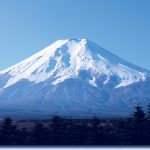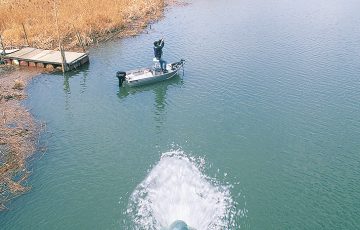 For several centuries, Asakusa (located in northeastern Tokyo) served as the cultural – if not political – playground of the capital.
For several centuries, Asakusa (located in northeastern Tokyo) served as the cultural – if not political – playground of the capital.
This small fishing village was initially situated on the outskirts of the city. It originally grew up around Senso-ji Temple and the adjacent Asakusa Shrine, two houses of worship that were also founded by fishermen. The neighborhood had, by the late 19th century, essentially become the centerpiece of so many forms of entertainment that it blitzed its competitors Ginza and Shinagawa on the Tokaido approach to the city. At the time, Ikebukuro, Shinjuku, Shibuya, and Roppongi were all unknown villages barely appearing on area maps.
Theaters of all shapes and sizes were to be found on many a street corner. Their entertainment options ranged from kabuki to early forms of Japanese opera and fledgling imitations of European plays. In a logical progression, restaurants offering a huge range of cuisine at a similarly broad range of prices began to appear alongside the playhouses. Hotels then emerged for those traveling to the area overnight as did public baths by the dozen – en-suite bathing still uncommon even a century ago. Brothels, though, were noticeably absent thanks to an ordinance carried over from the days of the Tokugawa Shogunate limiting such establishments to a fixed tract of land to the north of Asakusa known as Yoshiwara. In this area today a large number of the euphemistically titled “soaplands” can still be seen lighting up the night sky with their gaudy signboards advertising various forms of induced “cleanliness.”
Today, at the end of the first decade of the 21st century, even though it’s slipping down the ranks behind Shinjuku and Shibuya as a nightlife hotspot, Asakusa is still up there as one of the main draws in a city jam-packed with entertainment options. For non-Japanese tourists, Asakusa is a must-see. In the daytime Senso-ji stands first and foremost in the minds of all those in the area, but come dusk, as the temple closes down for the night and the neon comes on, the area surrounding it comes into its own.
Dimly lit alleyways and slightly wider boulevards form a grid-like system of streets linking the two national thoroughfares of Umamichi Dori in the east and Kokusai Dori in the west. These constitute the main entertainment area. It is into these streets that hundreds of thousands pour daily – for work and pleasure. Most are shoulder-to-shoulder mom ‘n’ pop stores, bars, restaurants, and souvenir shops with Japanese crafts aplenty. These are as authentic today as they always have been, although “authentic” is not necessarily a moniker applicable to the souvenirs offered on the garish temple approach known as Nakamise. Early Japanese moving to Brazil and South America sent their first crop of coffee beans into this area to get the natives back home hooked on what would eventually become a national obsession. That first shipment serving to attract former green tea drinkers to the delights of caffeine in a different form was followed by requests for payment for subsequent supplies. This clever technique is still used by supermarkets and candy shops offering free samples in an attempt to lure customers into more sizeable spending.
Hundreds of restaurants ply their trade here every night. From standing noodle stalls to more relaxed restaurants where customers can spend an arm and a leg for a combination of culture, history, and fine dining, Asakusa has it all. Cheap eats, both Japanese and Western, can be found throughout the area. Many of these run through the night in the hope of snagging those for whom the last glass of locally produced denki-bran trumped the last train home. Higher end restaurants are slightly less common, some actually shutting up shop after the daytime trade has passed. Of particular note after dark is Waentei Kikko (waentei-kikko.com), run by a three-stringed-shamisen player.
 At the northern / northwestern edge stands the 5656 Kaikan – a popular rakugo storytelling theater in which traditional tales are told by kimono-clad individuals armed, for the most part, with just a fan. South of here, the old-fashioned amusement park Hana-yashiki with its wooden roller coaster and entertainment options from the past operates almost daily. Some rides run into the later hours, the strange human screams sometimes making their way as far as the tranquility of the temple and shrine complex two hundred meters to the southeast.
At the northern / northwestern edge stands the 5656 Kaikan – a popular rakugo storytelling theater in which traditional tales are told by kimono-clad individuals armed, for the most part, with just a fan. South of here, the old-fashioned amusement park Hana-yashiki with its wooden roller coaster and entertainment options from the past operates almost daily. Some rides run into the later hours, the strange human screams sometimes making their way as far as the tranquility of the temple and shrine complex two hundred meters to the southeast.
Rok-za, Asakusa Engei Hall and Mokuba-kan, as well as several smaller (and now defunct) theaters all stand in this area to the west of Senso-ji proper, and have at times served as the springboard from which a famous Japanese actor or actress vaulted onto the national stage. Perhaps the most famous of these individuals, a living legend in his day, was the immensely respected ‘Enoken.’ Short for Enomoto Kenichi, this man is still regarded as one of the best all-round entertainers in Japanese theater and early television history.
The Asakusa Kokaido Hall, a larger public-maintained theater standing opposite Denpoin Temple is known for its large general entertainment shows. Even when closed, it pulls in tourists from all over Japan and around the world eager to see the large collection of handprints set in metal of those who have performed here over the years. Extra prints are made each January when some of Japan’s entertainment elite roll in to take part in the annual kabuki play held here.
 With all there is to do in Asakusa, however, it is perhaps the cheapest and most simple form of entertainment that stays in the mind the longest. By strolling around the streets branching out from the temple and multi-storied pagoda long after dark has fallen, you get to see a whole different side of Tokyo’s most famous temple and its shadows. Disinterested locals walking their dogs are the ones to keep an eye on as they meander down nameless streets. The tiny eateries and old coffee shops (some of the oldest in the nation) they frequent are likely the best value for money in the area. Take the time to follow them to these places, taking in the history that stretches back generations. Next time you’re in the area, consider yourself a little wiser now that you know a little more of what Asakusa has to offer.
With all there is to do in Asakusa, however, it is perhaps the cheapest and most simple form of entertainment that stays in the mind the longest. By strolling around the streets branching out from the temple and multi-storied pagoda long after dark has fallen, you get to see a whole different side of Tokyo’s most famous temple and its shadows. Disinterested locals walking their dogs are the ones to keep an eye on as they meander down nameless streets. The tiny eateries and old coffee shops (some of the oldest in the nation) they frequent are likely the best value for money in the area. Take the time to follow them to these places, taking in the history that stretches back generations. Next time you’re in the area, consider yourself a little wiser now that you know a little more of what Asakusa has to offer.
Story by Mark Buckton
From J SELECT Magazine, March 2010















Recent Comments